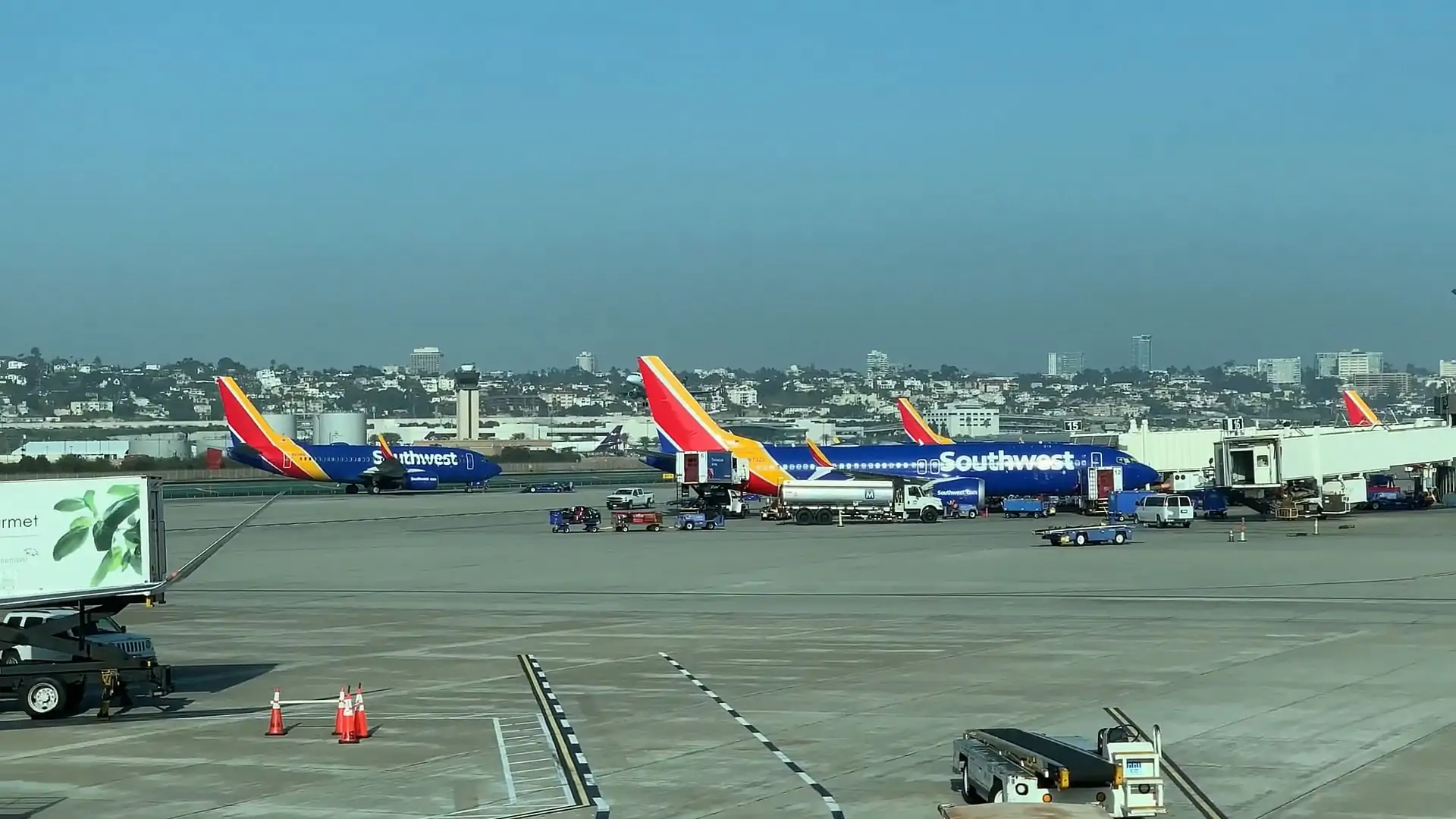Safe air travel often hinges on razor-sharp accuracy and unwavering focus. Some American airports put even the most seasoned pilots to the test, thanks to a blend of tricky geography, unpredictable weather, and congested skies.
But before listing the airports you must understand the hierarchy behind Air Force officer ranks!
With that said, I’ve gathered information from veteran aviators who have faced the most daunting conditions across the nation. The next sections highlight seven airfields that demand extraordinary skill and alertness. Let’s get started.
Table of Contents
Toggle1. Aspen-Pitkin County Airport (Aspen, Colorado)
Surrounded by the towering peaks of the Rocky Mountains, Aspen-Pitkin County Airport has long been regarded as a true challenge.
Its single runway and steep approach paths present technical hurdles far beyond those found at airports in flatter regions.
Key Points
- Steep Approach Requirement: Pilots undergo specialized training to handle the abrupt descents demanded by the surrounding terrain.
- One Runway, Opposite Directions: Takeoffs and landings occur in opposite directions on the same runway, which calls for meticulous traffic sequencing.
- Missed Approach Procedures: In the event of a go-around, pilots use a specific navigation aid not typically seen in more conventional airports.
According to Aviationpros, situated at an elevation of 7,820 feet above sea level, ASE’s thin mountain air significantly affects aircraft performance, particularly during takeoff and landing.
The airport is nestled in a narrow valley, surrounded by peaks reaching nearly 14,000 feet, which necessitates precise navigation through complex terrain. This topography restricts standard approach and departure paths, often requiring specialized procedures.
2. Ronald Reagan Washington National Airport (Washington, D.C.)
Located in one of the most restricted and crowded airspaces in the United States, Ronald Reagan Washington National Airport challenges pilots with both technical tasks and heightened security considerations.
Core Obstacles
- Restricted Zones: Sensitive government buildings and landmarks lie nearby, demanding exact adherence to flight corridors.
- Multiple Aircraft Types: Military helicopters, military jets, commercial jets, and small private planes share airspace, increasing the risk of potential conflicts.
- Intersecting Runways: The runway layout intersects, forcing precise coordination during arrivals and departures.
The airport’s airspace is densely populated with various helicopter operations, including military, law enforcement, and medical flights. This environment, often referred to as “helicopter alley,” increases the risk of mid-air conflicts.
According to Reuters, pilots have reported numerous near-miss incidents over the years, highlighting the challenges of maintaining safe separation in such a congested environment.
With so many aircraft and heightened security concerns, airports like Washington National and Dallas-Fort Worth are hotspots for potential safety risks. If a passenger sustains an injury while traveling through an airport, it’s important to understand who is legally responsible.
3. Eagle County Regional Airport (Gypsum, Colorado)
This is a great photo of the work that happens at #EGE ✈️
Can you guess the aircraft type in the photo?
📸: Eric Kruze pic.twitter.com/XWqAEarqc0— Eagle County Airport (@EGEairport) April 16, 2019
Nestled in mountainous terrain and known for its proximity to popular ski destinations, Eagle County Regional Airport ranks among the most technically demanding places to land.
Its elevated position and absence of a standard Instrument Landing System mean pilots rely on alternative approaches or purely visual cues in certain conditions.
Highlights
- LDA Approaches: Localizer Type Directional Aid approaches require a keen eye for lateral guidance, often compounded by mountain downdrafts.
- High Elevation: Thin air affects engine performance and aircraft handling, emphasizing the need for thorough performance planning.
- Variable Weather: Rapid weather changes can bring sudden gusts of wind, low visibility, and heavy snow, especially during winter months.
Eagle County Regional Airport (EGE) in Gypsum, Colorado, is recognized by veteran pilots as one of the more challenging airports in the United States.
The History Channel ranked it #8 on its list of Most Extreme Airports in July 2010, citing factors such as elevation, weather, mountainous terrain approaches, and complex departure procedures.
4. San Diego International Airport (San Diego, California)

Renowned for its gorgeous coastal scenery, San Diego International Airport also poses a series of operational hurdles. It holds the distinction of being the busiest single-runway commercial airport in the United States.
Main Challenges
- Single, Short Runway: Only one runway is available, bordered by urban development and the Pacific Ocean.
- Approaches Over Downtown: Aircraft often pass over city buildings at relatively low altitudes, forcing tight monitoring of vertical speed and track alignment.
- Wind Patterns & Turbulence: Ocean breezes funnel through the area, occasionally generating turbulence and crosswinds that complicate landings.
The airport’s location offers little margin for error. Professionals often emphasize the importance of consistent scanning for possible obstacles.
Safety and precision take precedence over any urge to shorten approach times or expedite turnarounds.
5. John Wayne Airport (Santa Ana, California)
John Wayne Airport sits in a densely populated region with strict noise abatement rules. Steep climb requirements, along with relatively short runways, have made it a hot topic among pilot communities.
Notable Factors
- Noise Abatement Procedures: Pilots must initiate rapid climbs to minimize community impact. This can be demanding, especially for larger or heavily loaded aircraft.
- Surrounding Residential Areas: Housing developments circle much of the airport, so any miscalculation can have serious implications.
- Limited Runway Length: While not the shortest in the country, the runways are still less forgiving than those at major hubs with longer surfaces.
Due to its proximity to residential areas, SNA enforces strict noise abatement protocols.
According to Ocair, pilots are required to execute steep climbs during takeoff to quickly reach altitudes that minimize noise impact on surrounding communities.
This procedure can create a sensation similar to a rollercoaster for passengers but is a routine operation for flight crews.
6. LaGuardia Airport (New York City, New York)
LaGuardia Airport often appears on lists of challenging airports, and it’s not hard to see why. Not only is it a gateway to one of the most populous cities in the world, but it also operates within a network of three major airports in the New York metropolitan area.
Key Difficulties
- Short Runways Over Water: Landings require pinpoint accuracy to avoid undershooting or overshooting into Flushing Bay.
- Tight Airspace: Pilots share the skies with traffic from John F. Kennedy International Airport and Newark Liberty International Airport, all in close proximity.
- Congestion: Massive numbers of flights arrive and depart each day, leaving little room for error or delay.
Those who’ve flown in and out of LaGuardia caution newcomers to keep a vigilant ear out for last-minute instructions from air traffic control.
The pace can feel relentless, but effective communication and thorough planning keep operations safe.
7. Juneau International Airport (Juneau, Alaska)
#AIRPORT | Juneau International Airport (JNU) boasts a rich history intertwined with the state’s development and the challenges of air travel in a remote region.
Read more at AviationSource!https://t.co/fDTBWqktQJ#Juneau #Alaska #AvGeek pic.twitter.com/jb4UEcqL76
— AviationSource (@AvSourceNews) June 1, 2024
Juneau International Airport rests along the scenic Gastineau Channel, nestled within rugged mountains that create a dramatic backdrop-while also adding significant operational demands.
Main Hurdles
- Challenging Terrain: Narrow valleys and steep peaks test even the most seasoned pilots.
- Unpredictable Weather: Low visibility, fog, and icy conditions can descend rapidly, forcing changes in approach procedures.
- Over-Water Flight: Many approach paths trace the coastline, so adverse winds and choppy seas can unsettle the aircraft.
Alaskan aviators often speak of the intense training required for flights in and out of Juneau.
The combination of mountainous surroundings and frequent weather shifts has led to specialized procedures that rely on skillful instrument flying.
Summary
Efficient operations at the nation’s most demanding airports call for a combination of proper training, situational awareness, and mutual respect between pilot and machine.
From high-elevation strips in the Rockies to short urban runways, each airfield on this list compels crews to manage risk under pressure. Those who operate in such environments often speak of the satisfaction that comes from mastering flight procedures where margins are narrow and skill is tested at every turn.
At the heart of it all lies a commitment to safety and professionalism-an unwavering standard that ensures smooth journeys for passengers who rely on aviation every single day.
Tip: If you’re interested in joining the Air Force, first things first, you need to fulfill the eligibility requirements!







